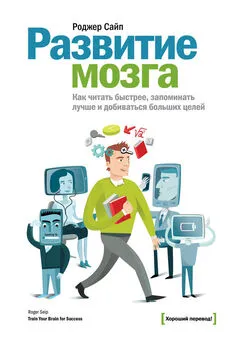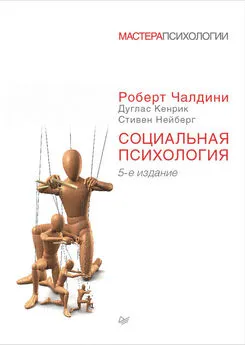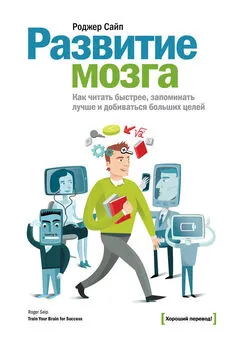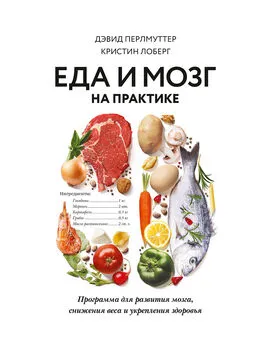Дуглас Кенрик - Рациональное животное. Как эволюция повлияла на развитие мозга
- Название:Рациональное животное. Как эволюция повлияла на развитие мозга
- Автор:
- Жанр:
- Издательство:Питер
- Год:2017
- Город:Санкт-Петербург
- ISBN:978-5-496-02982-7
- Рейтинг:
- Избранное:Добавить в избранное
-
Отзывы:
-
Ваша оценка:
Дуглас Кенрик - Рациональное животное. Как эволюция повлияла на развитие мозга краткое содержание
Почему миллиардеры столько работают, а потом бросают на ветер деньги, заработанные потом и кровью? Что общего между всеми нами и банкирами с Уолл-стрит, а также Элвисом Пресли и Стивом Джобсом?
В изящной и занимательной форме маэстро психологии Кенрик и Гришкевичус подвергают сомнению распространенные взгляды на процесс принятия решений и предлагают абсолютно новую альтернативу, основанную на эволюционной психологии. Устанавливая поразительную связь между поведением современного человека и его корнями, уходящими в прошлое, авторы показывают, что в основе «нелепых» поступков лежит чрезвычайно сложная система принятия решений.
Вкладывание денег, поиск работы, покупка машины, выбор спутника жизни — во всем этом за нашими решениями стоят скрытые эволюционные цели.
Эта замечательная книга полностью изменит ваше представление о процессе принятия решений.
Рациональное животное. Как эволюция повлияла на развитие мозга - читать онлайн бесплатно полную версию (весь текст целиком)
Интервал:
Закладка:
185. Moore, D. A., and P.J. Healy. 2008. “The trouble with overconfidence”. Psychological Review. 115(2): 502–517.
186. Mortensen, C. R., D. V. Becker, J. M. Ackerman, S. L. Neuberg, and D. T. Kenrick. 2010. “Infection breeds reticence: The effects of disease salience on self-perceptions of personality and behavioral avoidance tendencies”. Psychological Science. 21: 440–447.
187. Navarrete, C. D., D.M.T. Fessler, and S.J. Eng. 2007. “Elevated ethnocentrism in the first trimester of pregnancy”. Evolution and Human Behavior. 28 (1):60–65.
188. Nesse R. M. 2005. “Natural selection and the regulation of defenses: a signal detection analysis of the smoke detector principle”. Evolution and Human Behavior. 26: 88–105.
189. Nettle, D. 2010. “Dying young and living fast: Variation in life history across English neighborhoods”. Behavioral Ecology. 21: 387–395.
190. Neuberg, S. L., D. T. Kenrick, and M. Schaller. 2011. “Human Threat Management Systems: Self-Protection and Disease Avoidance”. Neuroscience & Biobehavioral Reviews. 35: 1042–1051.
191. Neuhoff, J. G. 1998. “A perceptual bias for rising tones”. Nature. 395 (6698):123–124.
192. Neuhoff, J. G. 2001. “An adaptive bias in the perception of looming auditory motion”. Ecological Psychology. 13 (2): 87–110.
193. Nicholson, Nigel. 2008. “Evolutionary Psychology and Family Business: A New Synthesis for Theory, Research, and Practice”. Family Business Review. 21: 103–118.
194. Nisbett, R., and T. Wilson. 1977. “Telling More than we can Know: Verbal reports on mental processes”. Psychological Review. 84: 231–259.
195. Null, G., M. Feldman, D. Rasio, and C. Dean. 2011. Death by medicine . Edinburg Va: Axios press.
196. O’Toole, James. 2012. “ Consumer reports slams Fisker Karma”. CNN. September 25 // http://money.cnn.com/2012/09/25/autos/fisker-karma-consumer-reports/index.html.
197. Ohman, A. and S. Mineka. 2001. “Fears, phobias, and preparedness. Toward an evolved module of fear and fear learning”. Psychological Review. 108:483–522.
198. Palmer, C. T. 1993. “Anger, Aggression, and Humor in Newfoundland Floor Hockey — an Evolutionary Analysis”. Aggressive Behavior. 19: 167–173.
199. Pinker, S. 2011. The better angels of our nature: The decline of violence in history and its causes . London: Penguin Books.
200. Rajamaran, I. 1983. “Economics of Bride-Price and Dowry”. Economic and Political Weekly 18, 275–279.
201. Rajecki, D. W., S.B. Bledsoe, and J.L. Rasmussen. 1991. “Successful personal ads: Gender differences and similarities in offers, stipulations, and outcomes”. Basic and Applied Social Psychology 12: 457–469.
202. Randeria, S., and L.Visaria. 1984. “Sociology of bride-price and dowry”.
Economic and Political Weekly 15: 648–652.
203. Rapaport, A., and A.M. Chammah. 1965 . Prisoner’s dilemma. Ann Arbor: University of Michigan Press.
204. Roff, D. A. 2002. Life History Evolution . Sunderland: Sinauer.
205. Ronay, R., and W. von Hippel. 2010. “The presence of an attractive woman elevates testosterone and physical risk-taking in young men”. Social Psychological and Personality Scienc, 1: 57–64.
206. Roney, James R. 2003. “Effects of Visual Exposure to the Opposite Sex: Cognitive Aspects of Mate Attraction in Human Males”. Personality and Social Psychology Bulletin 29 (3): 393–404.
207. Rosenblum, L. A., C. Forger, S. Noland, R.C. Trost, and J.D. Copland. 2001. “Response of adolescent bonnet macaques to an acute fear stimulus as a function of early rearing conditions ”. Developmental Psychobiology 39: 40–45.
208. Rucker, D. D., A.D. Galinsky, and D. Dubois. 2012. “Power and consumer behavior: How power shapes who and what consumers value”. Journal of Consumer Psychology 22: 352–368.
209. Russell, B. 1950. Unpopular Essays . London: George Allen and Unwin.
210. Russia. 2008. “The golden Porsche”. English Russia, July 4, http://englishRussia.com/2008/07/04/the-golden-porsche.
211. Saad, G. 2007. The evolutionary bases of consumption. Mahwah, NJ: Lawrence Erlbaum Associates Publishers.
212. Saad, G. 2011. The Consuming Instinct . Amherst, NY: Prometheus Books.
213. Saad, G. and J.G. Vongas. 2009. “The effect of conspicuous consumption on men’s testosterone levels”. Organizational Behavior and Human Decision Processes 110: 80–92.
214. Sagarin, B. J. 2005. “Reconsidering evolved sex differences in jealousy: Comment on Harris (2003)”. Personality and Social Psychology Review 9:62–75.
215. Sapolsky, R. M. 2002. A primate’s memoir: A neuroscientist’s unconventional life among the baboons . New York: Scribner.
216. Schaller, M., and L.A. Duncan. 2007. “The behavioral immune system: Its evolution and social psychological implications”. In J. P. Forgas, M. G. Haselton, & W. von Hippel (Eds.), Evolution and the social mind: Evolutionary psychology and social cognition (pp. 293–307) — New York: Psychology Press.
217. Schaller, M., and D. R. Murray. 2008. “Pathogens, personality and culture: Disease prevalence predicts worldwide variability in sociosexuality, extraversion, and openness to experience”. Journal of Personality and Social Psychology 95: 212–221.
218. Schaller, M., and J. H. Park. 2011. “The behavioral immune system (and why it matters)”. Current Directions in Psychological Science 20: 99–103.
219. Schaller, M., G. E. Miller, W. M. Gervais, S. Yager, and E. Chen. 2010. “Mere visual perception of other people’s’ disease symptoms facilitates a more aggressive immune response”. Psychological Science 21: 649–652.
220. Schaller, M., J. H. Park, and A. Mueller. 2003. “Fear of the dark: Interactive effects of beliefs about danger and ambient darkness on ethnic stereotypes”. Personality and Social Psychology Bulletin 29: 637–649.
221. Schmitt, D. P. 2005. “Sociosexuality from Argentina to Zimbabwe: A 48-nation study of sex, culture, and strategies of human mating”. Behavioral & Brain Sciences 28: 247–311.
222. Schmitt, D., et al. 2003. “Universal sex differences in the desire for sexual variety: Tests from 52 nations, 6 continents, and 13 islands”. Journal of Personality and Social Psychology 85: 85–104.
223. Schneider, Greg. 2004. “Toyota’s Prius Proving to Be the Hotter Ride in Hybrids”. Washington Post Monday, August 23 // http://www.washingtonpost.com/wp-dyn/articles/A24832-2004Aug22.html.
224. Schondelmeyer, S. 2007. “Viewpoint: In the growth in our drug tab sustainable?” Drug Topics , March 19, 2007 // http://drugtopics.modernmedicine.com/drugtopics/Special+Reports/Viewpoint-Is-the-growth- in-our-drug-tab-sustainabl/ArticleStandard/Article/detail/411533.
225. Scott, Annie 2009. “W Fort Lauderdale saves turtles from suicide” / Gadling, August 4 2009 // http://www.gadling.com/2009/08/04/w-fort-lauderdale-saves-turtles-from-suicide/.
226. Segal, N. 2000. Entwined Lives: Twins and What They Tell Us About Human Behavior. New York. Plume.
227. Segal, N. L., and V.A. Harris. 2008. “Bereavement-related responses following the loss of an MZ or DZ twin”. Behavior Genetics 38: 647.
228. Segal, N. L., and S.L. Hershberger. 1999. “Cooperation and competition in adolescent twins: Findings from a Prisoner’s Dilemma game”. Evolution and Human Behavior 20: 29–51.
229. Sherman, P. W. 1981. “Kinship, demography, and Belding’s ground squirrel nepotism”. Behavioral Ecology and Sociobiology 8: 251–259.
230. Shoda, Yuichi; Mischel, Walter; Peake, Philip K. 1990. “Predicting Adolescent Cognitive and Self-Regulatory Competencies from Preschool Delay of Gratification: Identifying Diagnostic Conditions”. Developmental Psychology 26 (6): 978–986.
231. Simon, H. A. 1955. “A behavioral model of rational choice”. Quarterly Journal of Economics 69: 99–118.
232. Simon, H. A. 1956. “Rational choice and the structure of the environment”. Psychological Review 63: 129–138.
233. Simpson, J. A., and S.W. Gangestad. 1992. “Sociosexuality and romantic partner choice”. Journal of Personality 60: 31–51.
234. Simpson, J. A., and S.W. Gangestad. 1991. “Individual differences in sociosexuality: Evidence for convergent and discriminant validity”. Journal of Personality and Social Psychology 60: 870–883.
235. Simpson, J. A., V. Griskevicius, S.I. Kuo, S. Sung, and W.A. Collins. 2012. “Evolution, stress, and sensitive periods: The influence of unpredictability in early versus late childhood on sex and risky behavior”. Developmental Psychology 48: 674–686.
236. Smith, G. 2004. “An evaluation of the corporate culture of Southwest Airlines”. Measuring Business Excellence 8: 26–33.
237. Smith M., B. Kish, C. Crawford. 1987. “Inheritance of wealth as human kin investment”. Ethology and Sociobiology 8 (3): 171–182.
238. Sperry, R. W. 1968. “Hemisphere deconnection and unity in conscious awareness”. American Psychologist 23, 723–733.
239. Stanley, Thomas, and William Danko (1996). The Millionaire Next Door. New York: Pocket Books. (Издание на русском языке: Стэнли Т., Данко У. Ваш сосед — миллионер. — Минск: Попурри, 2005.)
240. Stearns, S. 1992. The Evolution of Life Histories. Cambridge: Oxford University Press.
241. Stewart, J. B. 2005. Disney War . New York: Simon & Schuster. (Издание на русском языке: Стюарт Дж. Война за империю Disney. — М.: Альпина Бизнес Букс, 2006.)
242. Sugiyama L. S. 2004a. “Illness, Injury, and Disability among Shiwiar Forager- Horticulturalists: Implications of Health-Risk Buffering for the Evolution of Human Life History”. American Journal of Physical Anthropology 123:371–389.
243. Sugiyama L. S. 2004b. “Patterns of Shiwiar health insults indicate that provisioning during health crises reduces juvenile mortality”. In: Alvard, M. Socioeconomic Aspects of Human Behavioral Ecology: Research in Economic Anthropology , edited by M. Alvard, 23: 377–400. New York: Elsevier.
244. Sugiyama L. S., J. Tooby and L. Cosmides. 2002. “Cross-cultural Evidence of Cognitive Adaptations for Social Exchange among the Shiwiar of Ecuadorian Amazonia”. Proceedings of the National Academy of Sciences 99, 11 537–11 545.
245. Sundie, J. M., D. T. Kenrick, V. Griskevicius, J. M. Tybur, K. D. Vohs, and D.J. Beal. 2011. “Peacocks, Porsches, and Thorstein Veblen: Conspicuous consumption as a sexual signaling system”. Journal of Personality and Social Psychology 100: 664–680.
246. Tertilt, M. 2005. “Polygyny, fertility, and savings”. Journal of Political Economy 113: 1341–1371.
247. Thaler, R. H., A. Tversky, D. Kahneman and A. Schwartz. 1997. “The effect of Myopia and Loss Aversion on Risk Taking: An Experimental Test”. Quarterly Journal of Economics 112: 647-661.
248. Thaler, Richard and Cass Sunstein. 2008. Nudge: Improving Decisions About Health, Wealth, and Happiness. New Haven, CT: Yale University Press.
249. Thigpen, C. H., and H.M. Cleckley. 1957. The three faces of Eve. New York: McGraw-Hill.
Читать дальшеИнтервал:
Закладка:










